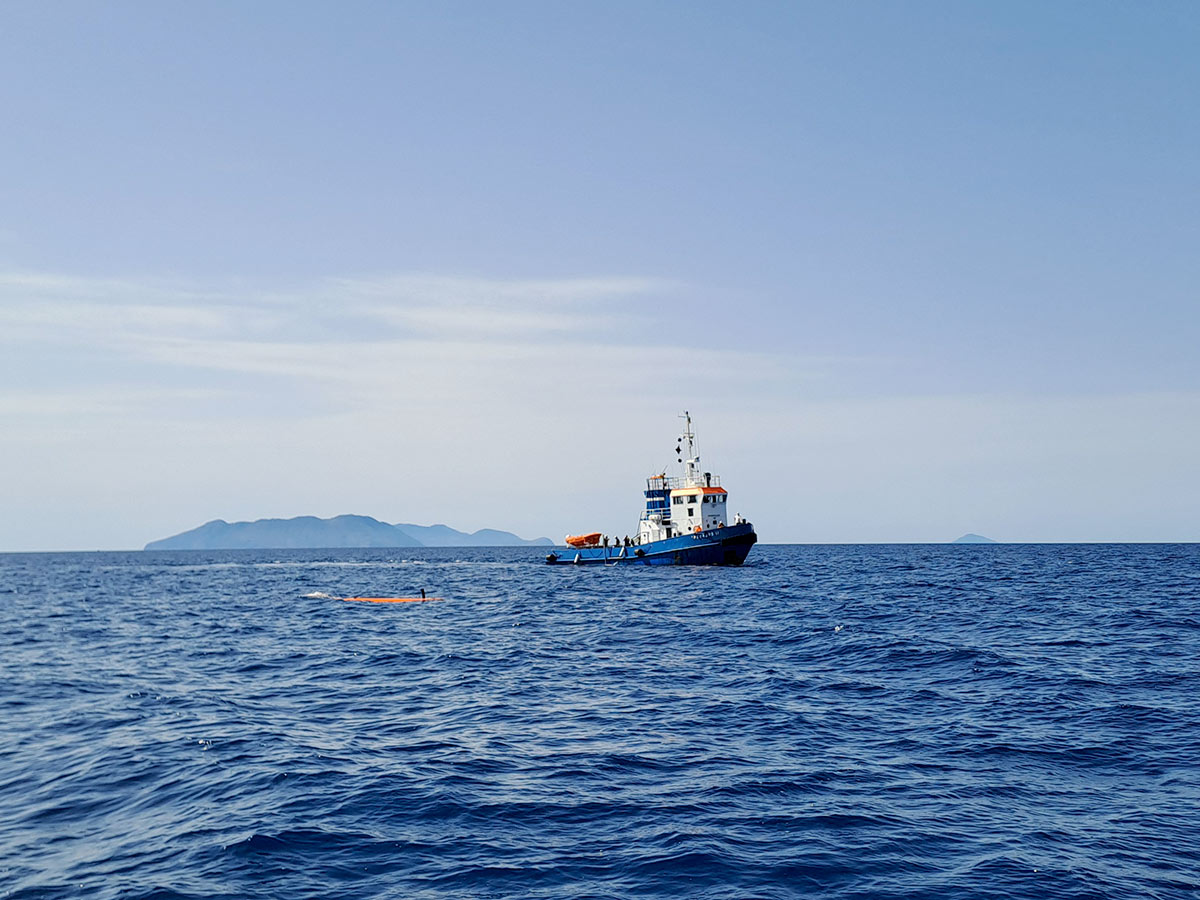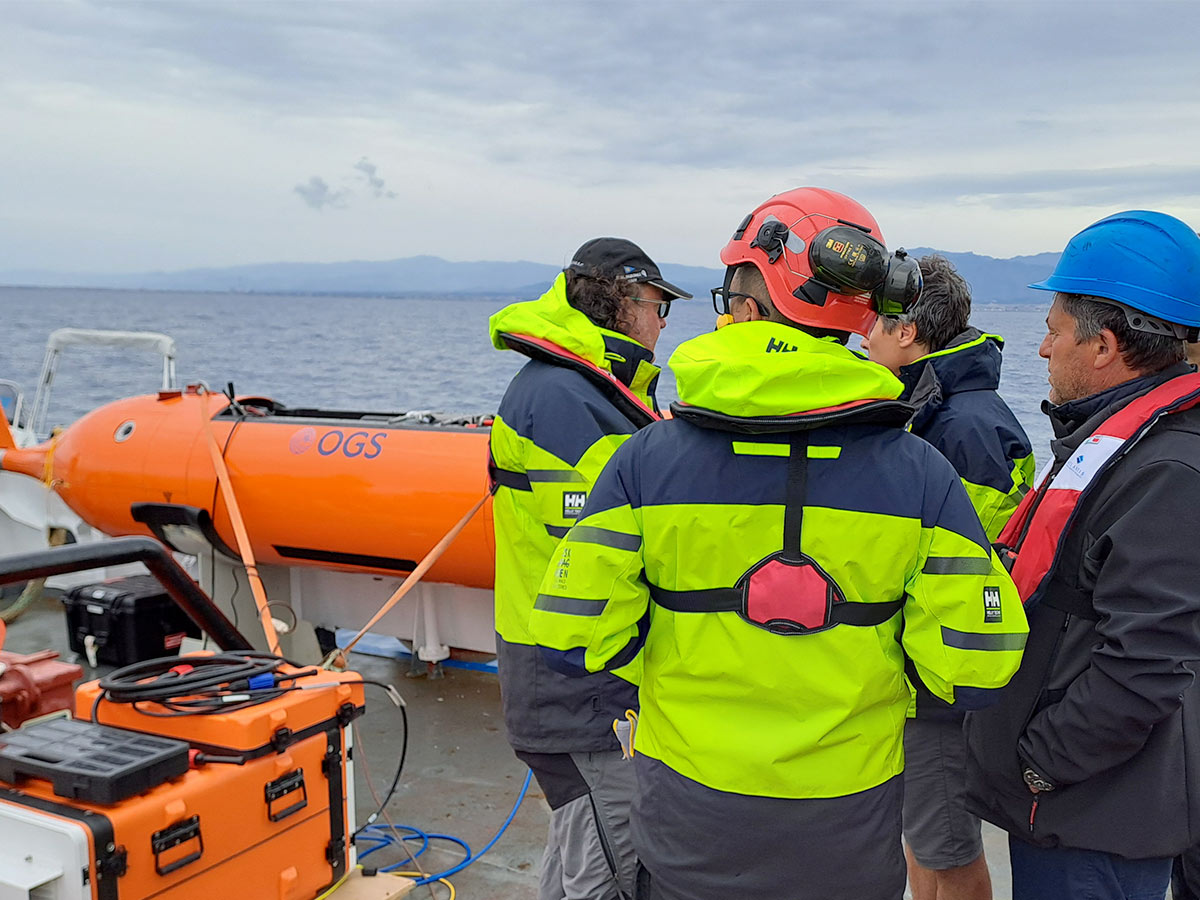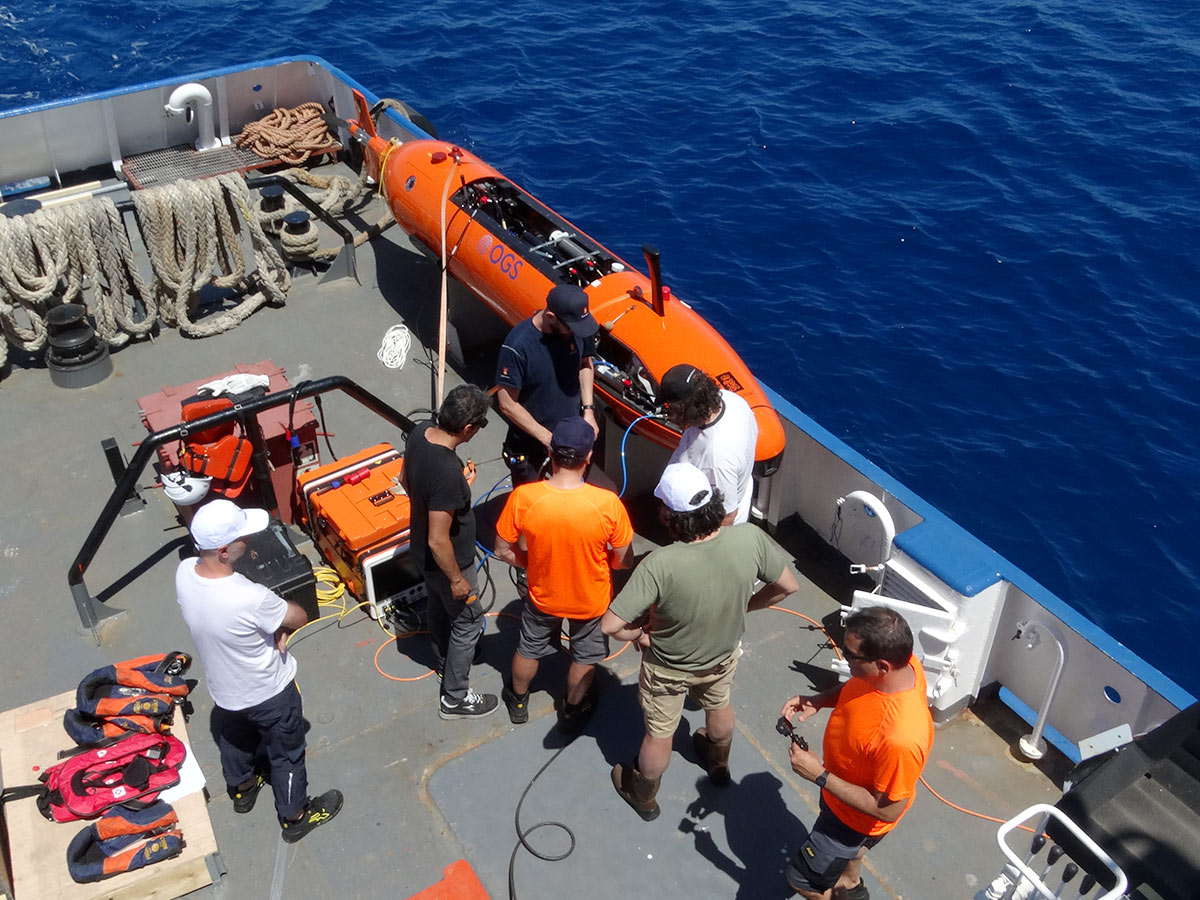
Underwater robotics: the new OGS AUV is ready for use in Sicily
The first tests in the waters of the Mediterranean Sea with the new AUV (Autonomous Underwater Vehicle) acquired by the National Institute of Oceanography and Applied Geophysics - OGS were completed today thanks to the IPANEMA project funded by the National Operational Programme for Research and Innovation 2014-2020 (PON) with resources from the European Regional Development Fund.
It an innovative autonomous underwater vehicle that recently joined the organisation's fleet, which uses instruments to study the sea and seabed from an oceanographic and geophysical point of view, providing data with a higher resolution than would be possible with conventional systems from the surface.
The OGS is now the first research organisation in Italy to have this state-of-the-art underwater robot for scientific research (only the Italian Navy has similar vehicles). It complements the instrumentation of the ECCSEL NatLab-Italy laboratory, a permanent infrastructure that is available to the national and international scientific community as well as public and private stakeholders interested in the topics of climate change, carbon dioxide capture and ocean acidification.
The instrument, worth over 4 million euros, has operational capabilities comparable to those of a research vessel, with very low operating costs. On board the AUV are instruments for mapping the seabed and numerous environmental sensors, making this object a genuine autonomous underwater laboratory. The data collected will allow numerous studies to be carried out, ranging from the analysis and monitoring of the volcanic systems present in the area to the study of the effects of climate change on marine ecosystems, analysing in detail the mechanisms of ocean acidification.
In recent days, thanks to the operational support of the Guardia Costiera of Milazzo, the technical and scientific staff of the organisation has carried out sea trials off the coast of Sicily to check the full functionality of the vehicle and calibrate the data obtained from the various sensors; the dives will be followed by sessions to analyse the data obtained in the new OGS laboratories in Milazzo, which were inaugurated a few weeks ago.




